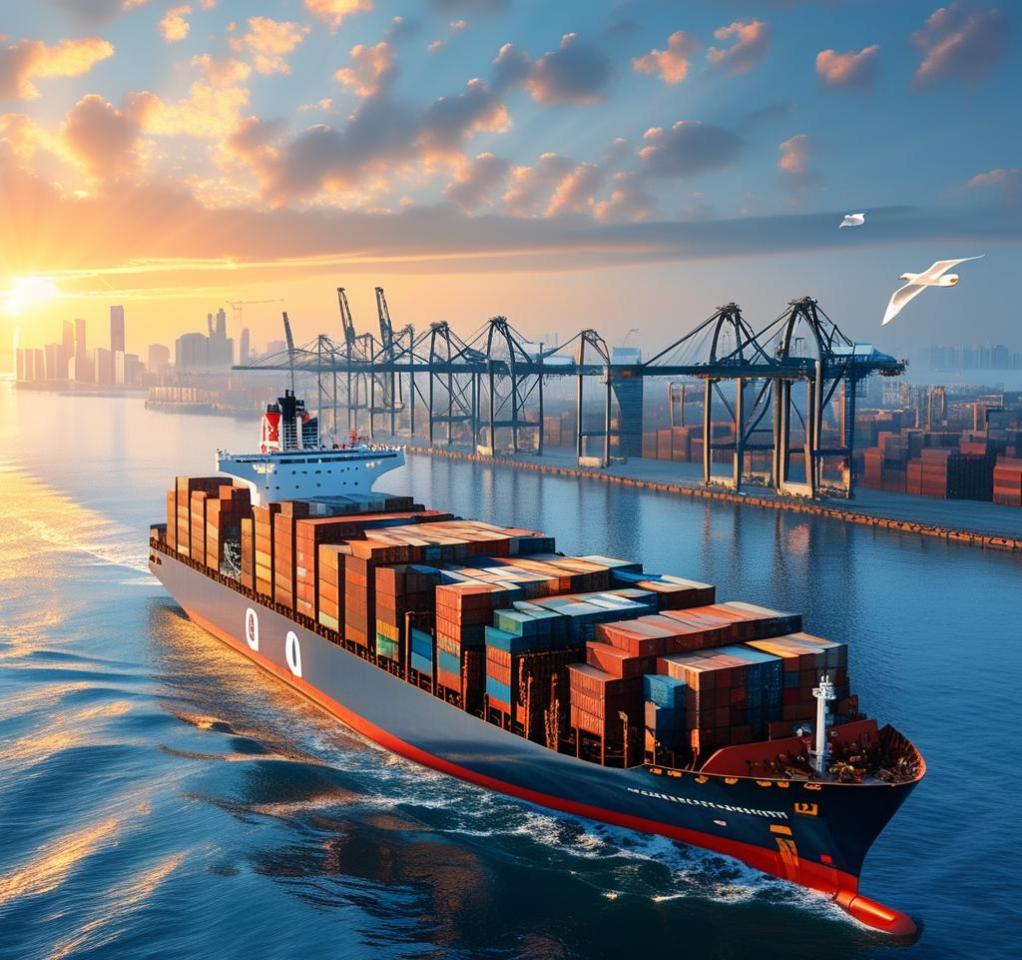- By TOP CHINA FREIGHT
- July 17, 2025
- Shipping
How Ocean Freight Powers Trade Between China and Germany?
Germany is China’s largest trading partner in Europe, with billions of dollars’ worth of goods shipped annually between the two countries. From automotive components to machinery, consumer goods to electronics, ocean shipping remains the most cost-effective and scalable way to transport goods from China to Germany.
If you’re an importer, freight forwarder, or business owner planning shipments from China to Germany, this guide covers everything you need to know—costs, routes and logistics support.

1. Cost-Effective for Bulk Cargo
Ocean freight is by far the most economical shipping method for large-volume or heavy goods. While air freight may deliver faster, its cost per kilogram is significantly higher. Ocean freight allows businesses to maximize shipping volume while keeping logistics budgets under control.
Typical Cost of Ocean Shipping from China to Germany
Ocean freight is known for its affordability—especially for large or heavy cargo. Here’s an overview of estimated rates:
| Shipping Mode | Estimated Cost (USD) |
|---|---|
| LCL (Less than Container Load) | $60–$100 per CBM |
| FCL 20-foot Container | $1,700 – $2,900 |
| FCL 40-foot Container | $2,800 – $4,500 |
| Customs Clearance (both sides) | $150–$300 per shipment |
| Door-to-Door Delivery | Based on origin, destination, and cargo weight |
Rates vary depending on fuel prices, carrier availability, port congestion, and seasonality.
2. Flexible Container Options
Whether you’re a small business or an enterprise, ocean shipping offers solutions tailored to your needs:
- FCL (Full Container Load): Exclusive use of a 20ft or 40ft container for bulk or high-volume cargo.
- LCL (Less-than-Container Load): Share a container and pay only for the space you use—ideal for smaller shipments.
- Reefer, Open-Top, Flat Rack Containers: For special goods like perishables, oversized machinery, or sensitive equipment.
3.Main Sea Route from China to Germany
Germany is a landlocked country, but it is well-connected to several major European seaports through inland rail and barge services. The main sea route involves shipping to a port in the Netherlands or Belgium, followed by inland transport to Germany.
| Route Segment | Details |
|---|---|
| Departure Ports (China) | Shanghai, Ningbo, Shenzhen, Qingdao, Tianjin, Xiamen |
| Ocean Route | South China Sea ➜ Strait of Malacca ➜ Indian Ocean ➜ Suez Canal ➜ Mediterranean ➜ North Sea |
| Arrival Ports (EU) | Port of Rotterdam (Netherlands), Port of Hamburg or Bremerhaven (Germany), Port of Antwerp (Belgium) |
| Transit Time (Sea Leg) | ~30–40 days |
| Inland Delivery (to Germany) | 1–5 days by truck, train, or barge |
Most ocean freight to Germany enters via Rotterdam or Antwerp, then moves inland by rail or road.
4. End-to-End Logistics Support
Professional freight forwarders offer complete logistics management, covering every step of the shipping process:
| Logistics Stage | Services Included |
|---|---|
| Supplier Pickup in China | Trucking from factory to Chinese port |
| Export Customs Clearance | Export declarations, compliance documentation, HS code validation |
| Ocean Freight Booking | Carrier selection, space reservation, container coordination |
| Port Handling in China | Stuffing, terminal fees, documentation, bill of lading |
| Sea Freight Transit | Tracking, scheduling updates, ETA reporting |
| Import Handling in Europe | EU customs declaration, duty/VAT management, container unloading |
| Inland Transport to Germany | Rail, truck, or barge delivery to final destination |
| Value-Added Services | Warehousing, cargo insurance, labeling, consolidation, return handling |
5. Sustainable & Scalable Shipping
Ocean shipping is significantly more energy-efficient than air freight, making it the more environmentally responsible choice. For businesses aiming to lower their carbon footprint while still moving large volumes, sea freight is the most sustainable solution.
And thanks to increasing automation at ports and smart logistics systems, ocean shipping is now faster and more flexible than ever before.
Need a Shipping Quote?
Click below to get a free, no-obligation quote from TJ China Freight.
We’ll respond within 24 hours with the best shipping options for your cargo.
FAQ
Q1: How long does ocean shipping take from China to Germany?
Transit time is typically 30 to 40 days from port in China to a seaport in Europe, plus 1–5 days for inland transport to Germany.
Example: Shanghai ➜ Rotterdam ➜ Frankfurt = ~35–42 days total.
Q2: What are the best ports in Europe to ship to Germany?
- Rotterdam (Netherlands) – Largest European port; efficient rail connections to German cities
- Hamburg (Germany) – Germany’s biggest port; ideal for northern Germany
- Antwerp (Belgium) – Another key hub with reliable inland transport links
Q3: What documents are required for ocean freight to Germany?
You will typically need:
- Commercial Invoice
- Packing List
- Bill of Lading
- Certificate of Origin (if required)
- Import declaration and EORI number (for EU clearance)
Q4: Do I need to pay duties and VAT in Germany?
Yes. Upon import into the EU:
- Customs duties are based on product type (HS code)
- Import VAT is typically 19% in Germany
A freight forwarder or customs broker can help manage this.
